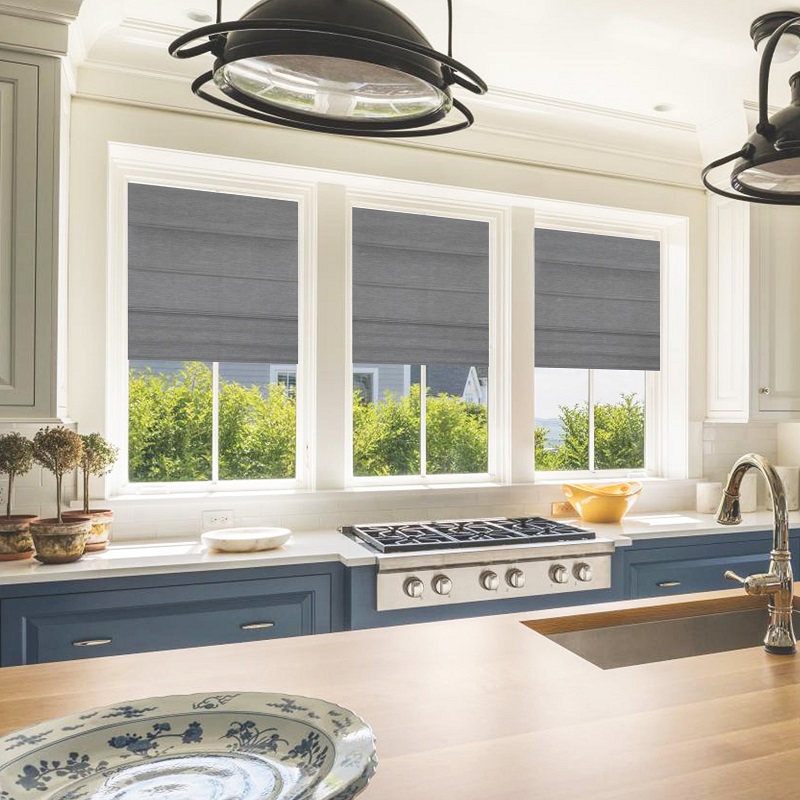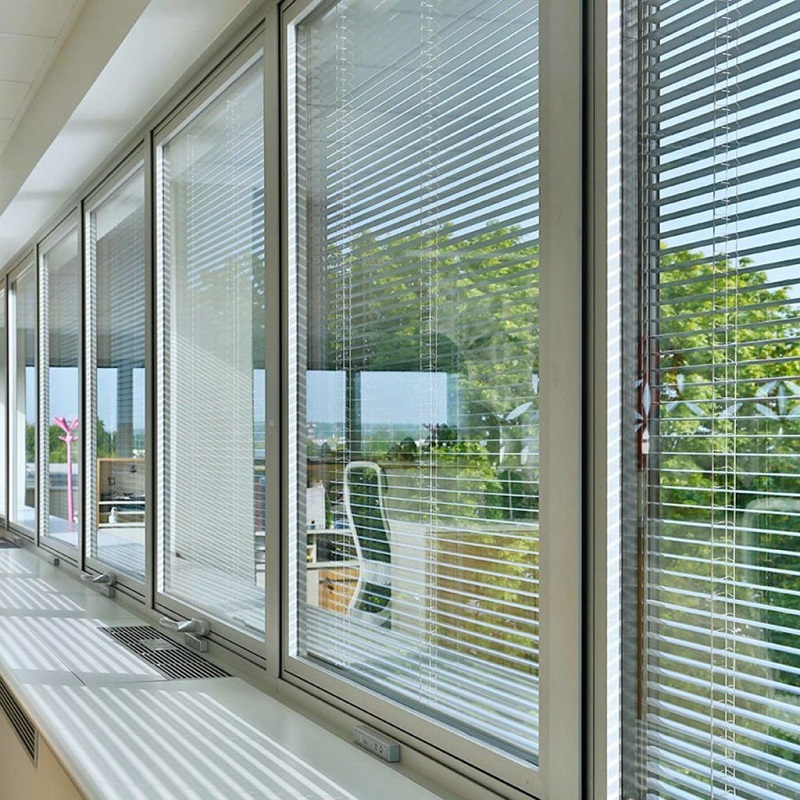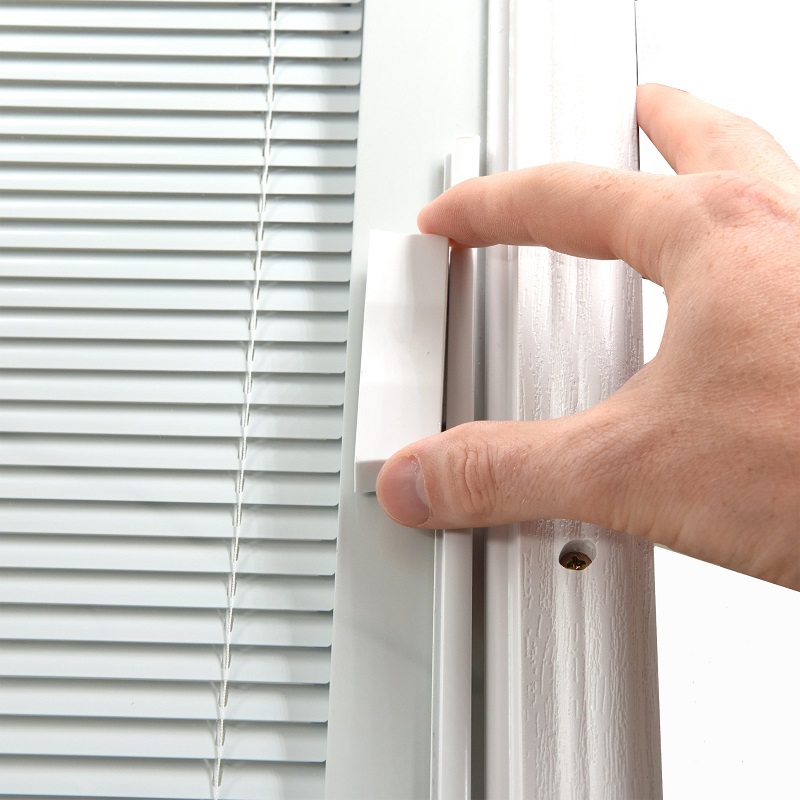Window blinds integrated within double glazing are becoming increasingly popular in modern home design. These blinds, enclosed between the panes of glass, offer a range of advantages, from convenience to aesthetic appeal. This article explores the benefits of integrated blinds, various design ideas, and considerations for incorporating them into your home.
The Benefits of Integrated Window Blinds
Convenience and Maintenance
Integrated blinds offer unparalleled convenience compared to traditional window coverings. Because they are sealed within the glass units, they require minimal maintenance. There’s no need for regular cleaning or dusting, as they are protected from external elements. The absence of cords or chains reduces the risk of damage and makes them safer for homes with children and pets. This maintenance-free aspect means homeowners can enjoy the functionality of blinds without the added chore of upkeep.
Enhanced Durability
Another significant advantage of integrated blinds is their durability. Encased within the glass panes, they are shielded from physical wear and tear. This setup protects them from environmental factors such as moisture, dust, and temperature fluctuations, which can cause traditional blinds to deteriorate over time. The sealed nature of these blinds also contributes to better insulation, potentially improving energy efficiency by reducing heat loss through windows.
Improved Aesthetic Appeal
Integrated blinds provide a sleek, modern look that can enhance the aesthetic appeal of any room. Without external mechanisms, they contribute to a clean and uncluttered window space. This seamless design can complement various interior styles, from minimalist to contemporary. The ability to choose from different colors and finishes allows homeowners to match the blinds with their overall decor scheme, creating a cohesive and stylish appearance.

Design Ideas for Integrated Blinds
Minimalist and Contemporary Styles
Integrated blinds are particularly well-suited for minimalist and contemporary interior designs. Their hidden nature aligns perfectly with a minimalist ethos, focusing on clean lines and uncluttered spaces. In contemporary settings, these blinds can be a subtle yet sophisticated addition, blending seamlessly with large glass panels and modern furnishings. Opting for neutral colors or subtle patterns can enhance the minimalist appeal, allowing the blinds to contribute to the overall design without overpowering it.
Smart Home Integration
As technology advances, integrating smart features into home design becomes increasingly popular. Integrated blinds can be paired with smart home systems, allowing for remote control and automation. Homeowners can adjust the blinds’ position using a smartphone app or voice commands through a smart assistant. This integration not only adds convenience but also enhances energy efficiency by enabling precise control over natural light and heat.
Customized Solutions for Unique Spaces
Integrated blinds offer flexibility in design, making them suitable for various window shapes and sizes. Whether dealing with large floor-to-ceiling windows, skylights, or uniquely shaped openings, custom solutions can be designed to fit. This customization ensures that the blinds function effectively while complementing the architectural features of the space. For instance, integrating blinds into curved windows or angled skylights requires precise measurements and tailored solutions, but the result can be a perfectly coordinated and functional window treatment.
Choosing the Right Integrated Blinds
Material and Finish Options
Integrated blinds come in various materials and finishes, each offering different benefits. Common materials include aluminum and fabric, with options for different levels of opacity and insulation. Aluminum blinds are durable and easy to clean, while fabric options can provide a softer appearance and better light diffusion. The finish of the blinds can also be customized to match the interior decor, from matte to glossy surfaces, ensuring that the blinds complement the overall design.
Color and Style Considerations
The color and style of integrated blinds should align with the room’s color scheme and design theme. Light colors can create a sense of openness and brightness, while darker hues add sophistication and warmth. Additionally, various styles, such as Venetian or pleated blinds, can offer different levels of light control and privacy. Choosing a style that fits the functional needs of the room—such as blackout blinds for bedrooms or sheer blinds for living areas—can enhance both the practicality and aesthetic of the space.
Installation and Professional Advice
Proper installation is crucial for the optimal performance of integrated blinds. It’s essential to work with a professional who can ensure that the blinds are fitted correctly and operate smoothly. Professionals can provide valuable advice on the best options for your specific windows and needs, from selecting the right materials to ensuring precise measurements. Investing in expert installation can prevent common issues and ensure that the blinds function effectively and look their best.

The Impact on Home Value
Enhancing Property Appeal
Integrated blinds can add significant value to a property by enhancing its appeal and functionality. Their modern design and low maintenance requirements make them an attractive feature for potential buyers. In real estate markets where energy efficiency and contemporary design are highly valued, integrated blinds can be a selling point that differentiates your property from others.
Long-Term Investment
While the initial cost of integrated blinds may be higher than traditional options, their durability and energy-saving benefits make them a worthwhile long-term investment. The reduced need for maintenance and the potential for lower energy bills can offset the initial expenditure over time. Additionally, the aesthetic and functional advantages contribute to a higher resale value, making them a prudent choice for homeowners looking to invest in their property’s future.
Practical Considerations for Installation
Before installing integrated blinds, consider practical aspects such as window orientation and light exposure. For example, rooms that receive a lot of sunlight may benefit from blinds with high UV protection or heat control features. Additionally, ensure that the chosen blinds complement the overall design of the home and enhance its energy efficiency. Consulting with experts and evaluating different options can help in making an informed decision that aligns with both aesthetic preferences and practical needs.
Cost-Effectiveness Over Time
While the initial investment in integrated blinds may be higher than traditional window treatments, they offer long-term cost savings. Their durability means fewer replacements and repairs, and their energy efficiency can lower utility bills. Over time, the combined savings on maintenance and energy can offset the initial expense, making integrated blinds a cost-effective choice for homeowners looking for a balance between functionality and financial investment.
Customization and Personalization
Integrated blinds offer a high degree of customization to suit individual tastes and needs. Homeowners can choose from a variety of materials, colors, and styles to create a personalized look that complements their home decor. Additionally, advanced options like automated control systems and specialized coatings can be tailored to specific preferences, ensuring that the blinds not only match the aesthetic but also enhance the functionality of the space.
Versatility in Different Home Types
Integrated blinds are versatile and can adapt to various types of homes, from urban apartments to suburban houses. They can customiz to fit different window sizes and shapes, making them suitable for a wide range of architectural styles. Whether installed in a modern high-rise or a traditional home, integrated blinds provide a sleek, cohesive look that enhances both the exterior and interior appearance of the property.

Conclusion: Embracing Integrated Blinds
Integrated blinds offer a range of benefits, from convenience and durability to aesthetic appeal and energy efficiency. Their modern design and low maintenance requirements make them a valuable addition to contemporary homes. By considering design ideas, material options, and professional installation, homeowners can maximize the advantages of integrated blinds. Whether enhancing a minimalist space, integrating with smart home technology, or adding value to a property, integrated blinds represent a sophisticated and practical choice for modern window treatments.








